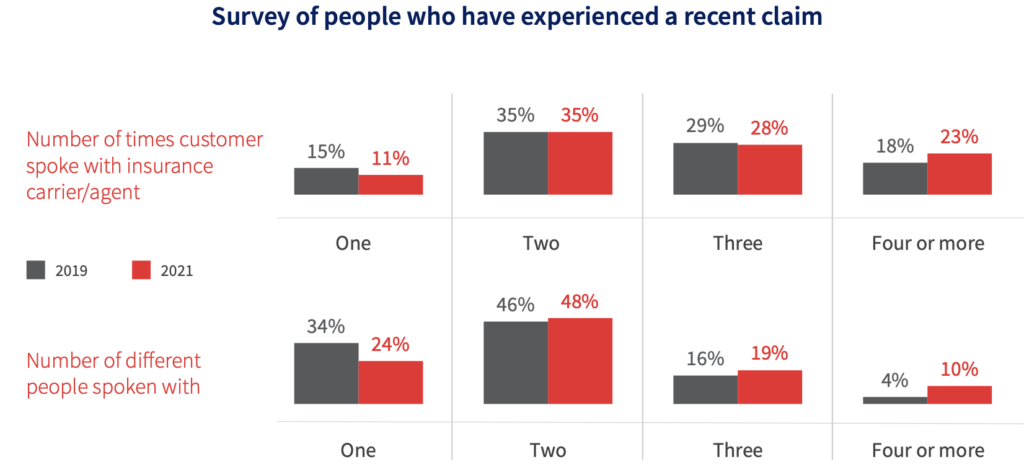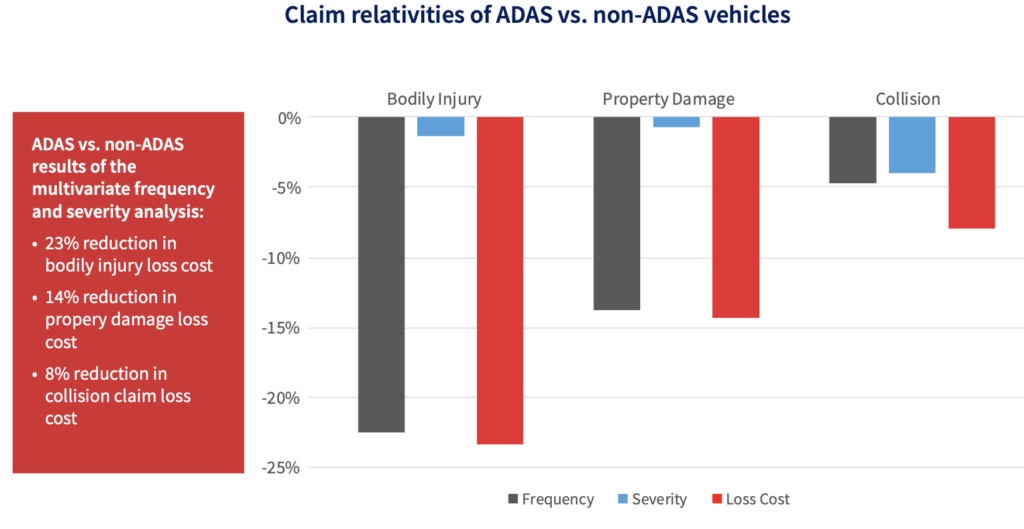
LexisNexis: Digital claims processes frustrate consumers; UBI adoption remains low
By onInsurance
The LexisNexis 2022 U.S. Auto Insurance Trends Report shows that customers are becoming more comfortable with self-service digital claims processing, but are frustrated by systems that do not meet their expectations.
The report notes that, according to its 2021 Future of Claims Study, consumer preference for self-service claims has increased among millennials, Gen X, and baby boomers over the past two years, in some cases by as much as 16 percentage points.
For instance, the 2021 study found that 50% of millennials are comfortable submitting photos and documents online and that 47% are comfortable with the submission of estimates.
Comfort levels with digital processes are lowest with baby boomers, with just 36% preferring digital submission of first notice of loss (FNOL), and 40% preferring the submission of photos and documents.
At least 50% of each group prefer being able to check for their claims approval and payment online, the only activity that achieves this level of comfort.
LexisNexis suggests that consumers are becoming more comfortable with digital self-service options and that may be carrying over into insurance interactions. At the same time, those other self-service options may be creating expectations that insurers aren’t meeting.
“Your customers are getting comfortable with self-service digital services in many aspect of their lives – including banking, consumer packaged goods and education,” the report says. “Many of these industries deliver experiences that are intuitive and seamless. Thus, they’ve set the bar for how customers will evaluate [carriers] in delivering similar services.”
In fact, LexisNexis said, the number of points of contact between the customer and the insurance company has not decreased since a similar study in 2019. Today, 29% of consumers speak with three or more people to get their claims settled, compared to 20% two years ago.
The report said that such “multiple touch points continue to be a cause of frustration for claimants.” It calls that discrepancy between customer expectations and the actual experience a “disconnect.”
In other words, the industry has made no measurable progress in moving toward “touchless” claims, in which a piece of telematics technology or the customer reports the damage, and artificial intelligence evaluates and pays the claim, with no human involvement.
The LexisNexis report echoes the J.D. Power 2021 U.S. Insurance Digital Experience Study, issued in May 2021, which found that digital offerings were not keeping pace with consumer expectations.
“Overall customer satisfaction with the P&C insurance customer service experience improves to 860 (on a 1,000-point scale) from 858 in 2020 and overall satisfaction with the shopping experience declines to 788 from 800 a year ago, as record numbers of insurance customers transitioned to digital during the height of the pandemic. Beneath these headline figures, many individual insurers saw volatile year-over-year swings in their overall satisfaction scores,” J.D. Power said.
“Being ‘good enough’ doesn’t cut it in a world where consumers are managing so much of their lives through digital interfaces and upending conventional notions of customer engagement,” said Michael Ellison, president of Corporate Insight, a J.D. Power partner. “While most insurers are making it possible to perform basic functions online or via mobile, very few are delivering a markedly improved, highly personalized overall experience via digital, even though innovative firms are showing that it is possible to do that now.”
Mixed findings on telematics
The LexisNexis report also takes a look at the use of telematics data. It finds that 76% of the largest 50 U.S. auto insurance carriers believe that the use of telematics can reduce the cost of insurance for consumers, principally through smartphone apps.
Only 30% of insurance carriers were using telematics exchange data at the time of the survey, LexisNexis said. Yet “all respondents answered that they are ‘at least somewhat interested’ in using telematics exchange data within the next three years, with the top 10 insurers expressing the highest interest.”
At the same time, carriers that do use telematics are finding that their apps are not fully meeting their needs, the report said. “Approximately 60% of respondents said the apps yield incomplete and limited telematics data, making insurers less confident in the telematics data they’re using to assess and calculate risks” – undercutting a major benefit of the technology.
In spite of the shortcomings, 70% of the 10 largest U.S. carriers that took part in a 2021 survey said they expect telematics data to become a core part of their business at some point. In addition, LexisNexis said, 96% said they feel the need to invest in telematics now to avoid being left behind by their competitors.
Consumers have been slow to move to telematics-based products, with just 22% opting to have their driver and vehicle data used in setting their insurance premiums. This isn’t because consumers are unfamiliar with the technology – 67% of consumers know their data can be used in this way, according to a December 2021 U.S. consumer survey by LexisNexis, and 71% say they are interested in such an application.
LexisNexis attributes the greater interest in usage-based insurance (UBI) to pandemic-related shifts in driving patterns, “as insureds increasingly feel that more traditional insurance models may no longer fit their needs.”
The report found that of the 265 million vehicles on U.S. roads, 50 million have connectivity capabilities that allow odometer mileage data to be transmitted. Through its agreements with OEMs, LexisNexis said it expects to be able to collect mileage data from more than 30% of connected vehicles in 2022.
Vehicle production affects ADAS adoption
The reduction in vehicle production that has resulted from supply chain disruptions and other issues is having an effect on the percentage of vehicles on the road equipped with advanced driver assistance systems (ADAS) technology, LexisNexis said.
Still, it said, “the number of vehicles equipped with ADAS has continued to steadily increase with the launch of each new model year.”
The report said that 46% of vehicles on the road are model year 2014 and newer and that 51% of those vehicles are equipped with ADAS, meaning that the technology “has a potential to influence claim performance on a significant portion” of vehicles in use.
A recent LexisNexis study found that ADAS tended to reduce claim frequency, but had little effect on claim severity. Vehicles with ADAS were shown to have an 8% reduction in collision claim loss cost, versus a 23% reduction in bodily injury loss cost, and a 14% drop in property damage loss cost.
More information
LexisNexis: Major auto carriers using or piloting ‘touchless’ claims
LexisNexis: More insurance execs using, open to virtual claims, might go touchless
A.M. BestTV: LexisNexis VP predicts 50% of collision losses self-service, ‘touchless’ in 5 years
Images
Featured image: A motorist takes a photo of damage sustained by a car in a collision. (monkeybusinessimages/iStock)
Graphs provided by LexisNexis Information Systems



